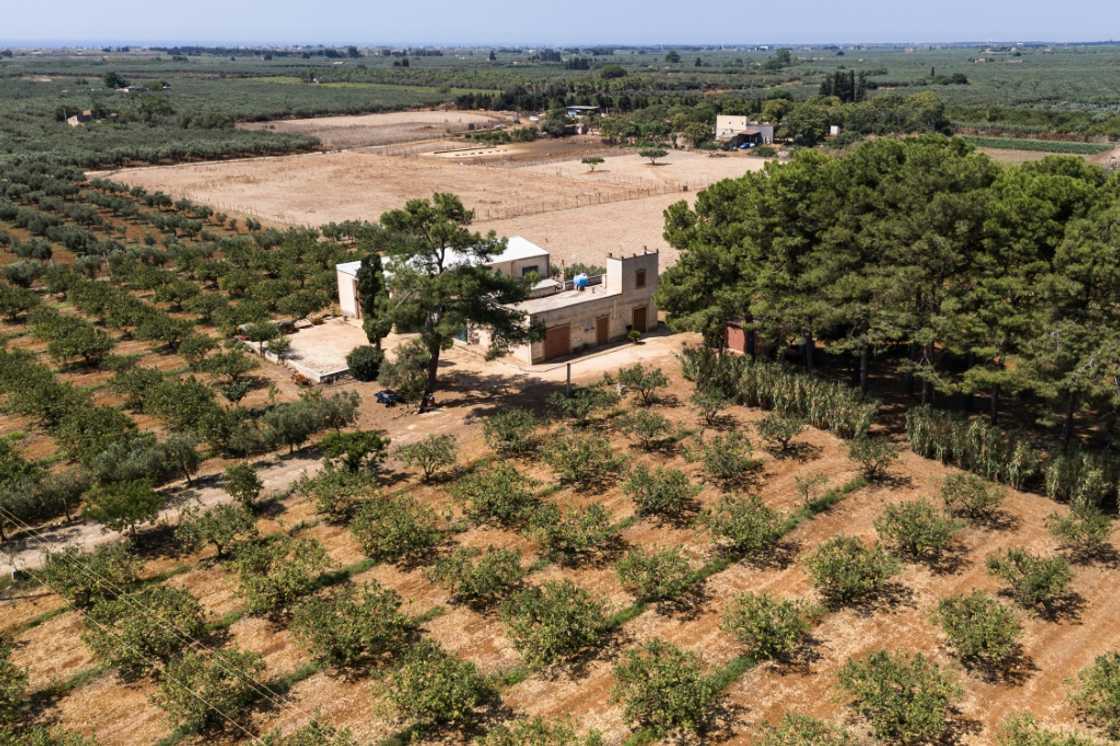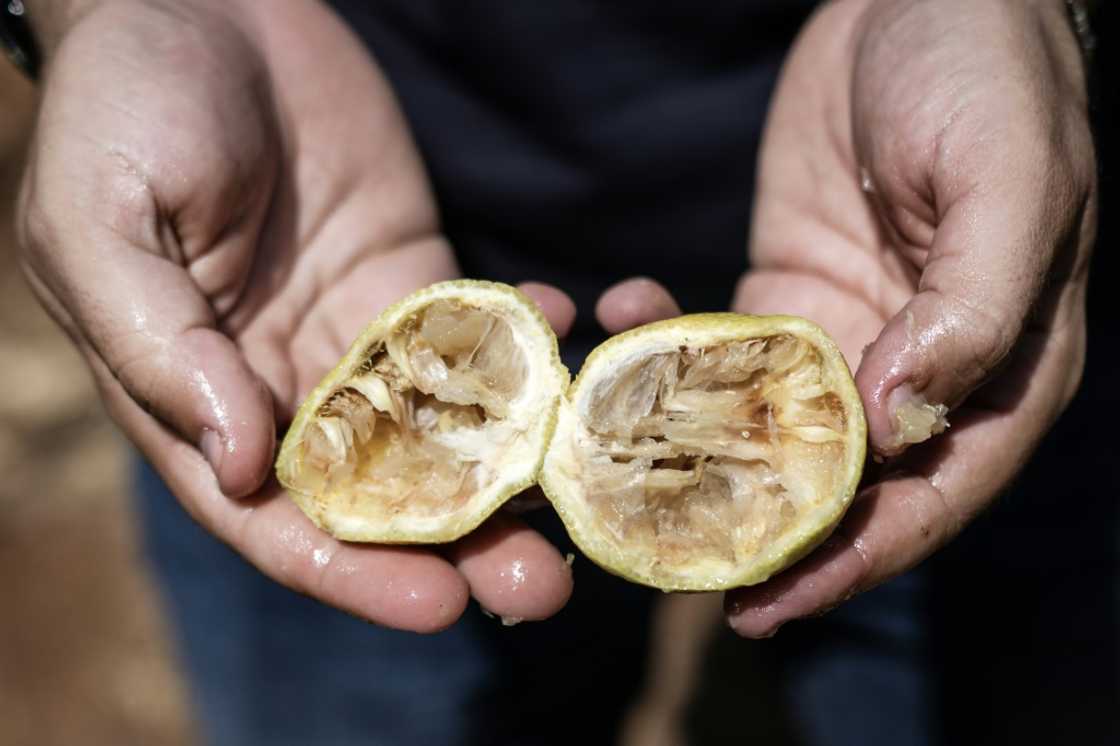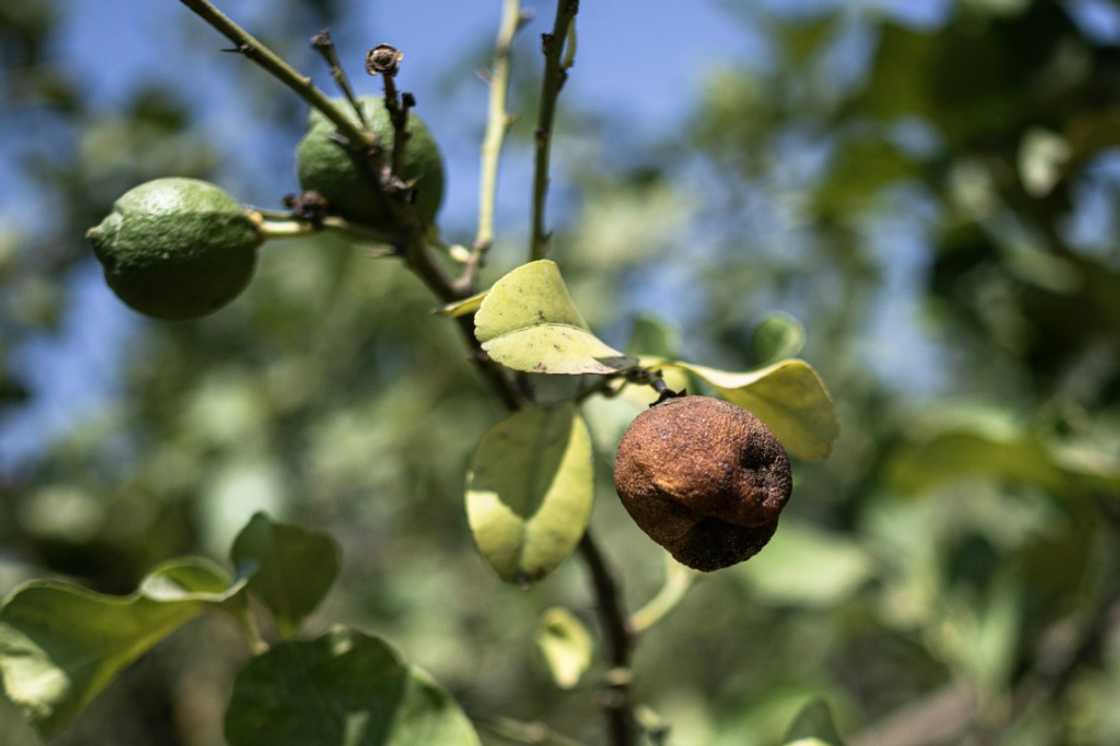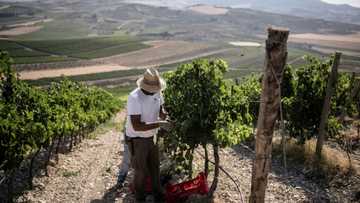In drought-hit Sicily, rainwater is dumped in the sea

Source: AFP
Sicilian lemon producer Rosario Cognata is furious: his fruit is withering due to the drought, while just a few kilometres away rainwater is being dumped into the sea.
The Trinita dam, built in 1959 in the town of Castelvetrano in the west of the Mediterranean island, has not been tested and therefore has never been officially approved for use.
So as soon as the reservoir fills up with winter rains, the authorities open the floodgates and the blue gold pours into a canal ending in the sea.
"Okay, the drought is due to lack of rain. But we don't know how to manage the water we have -- and it's not the farmers' responsibility," said Cognata, as he looked into the dam, the low water level revealing rusting steel tubes.
The dam was intended to supply local irrigation networks, so farmers' wells were closed by authorities.
But the infrastructure not only never got the green light, it was also subsequently neglected.
The pipes are now dilapidated, leaving some desperate farmers to dig illegal wells to compensate.
Cognata blames decades of incompetent local and government water management.
"They were never interested," he said.
It is an accusation repeated often by Italy's main agricultural organisation Coldiretti, to which Cognata belongs.
Outdated network
Sicilians have always known drought, but global warming is accentuating its frequency and intensity.

Source: AFP
This year "rainfall is down by about 350 mm compared to an average annual rainfall of 750 mm", said hydrology professor Leonardo Valerio Noto.
In his office at the University of Palermo, he analyses satellite images of the island's 46 artificial reservoirs.
"Many of these reservoirs are already in a near-critical situation. Some are practically empty while others, particularly those serving large cities, are experiencing a significant decrease in resources," he told AFP.
The summer of 2025 could be even worse, with withdrawals expected to be greater than rainfall.
Some provinces, especially in the south, are seriously lacking in drinking water and cuts are recurrent.
Like Cognata, Noto deplores the lack of public investment in maintaining the distribution network.
Italy is the leading EU country in terms of absolute volumes of fresh water drawn from the surface or underground.

Source: AFP
But "out of 100 litres injected into the distribution network, 42 are lost along the way" due to the poor condition of the pipes, Noto said.
According to the National Institute of Statistics (Istat), the wasted water would meet the annual needs of 43 million people -- or three out of four Italians.
Sardinia and Sicily are the worst performers, losing 52.8 percent and 51.6 percent of water, respectively.
According to the Fondo Ambiente foundation, 60 percent of the national network is over 30 years old, while 25 percent is over 50 years old.
At the current rate of pipeline renewal -- barely four metres per kilometre a year -- it would take 250 years to replace them.
Young people are leaving
The Sicily Region told AFP it was responding to the drought "with the greatest determination, both for agriculture and for the population".
It signed an action plan with the government in July worth 1.6 billion euros, which includes the aim to "reduce water losses".
But local water management issues have exasperated the crisis.
Agrigento in southern Italy missed out on nearly 50 million euros in funding by failing to respond in time to a call for tenders, sparking protests earlier this month.

Source: AFP
On his estate in Campobello di Mazara, which he runs with his father, Cognata watches helplessly as his lemons rot and drop off "stressed" trees.
The fruit is yellow on the outside, brown on the inside: burned by the sun, when at this time of year it should still be green.
Cognata estimates his losses at between 30 percent and 40 percent.
"Without water, there is no life. It is very serious. Families risk their livelihood, young people prefer to leave and the countryside is emptying," he said.
Despite having one of the highest birth rates in Italy -- an ageing country -- Sicily has been one of the most rapidly depopulating regions in the last 10 years.
New feature: Сheck out news that is picked for YOU ➡️ click on “Recommended for you” and enjoy!
Source: AFP





